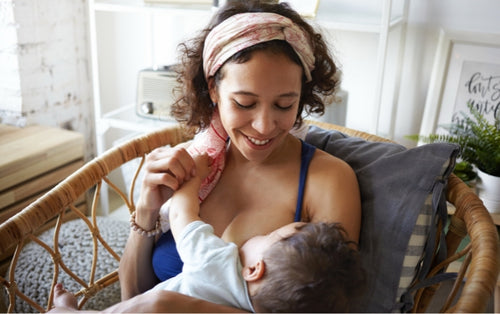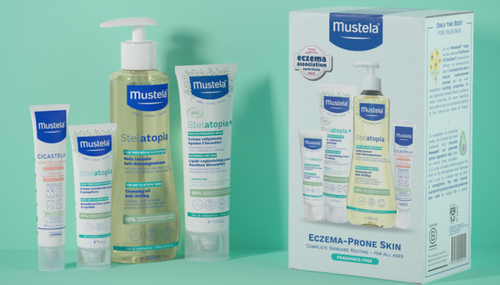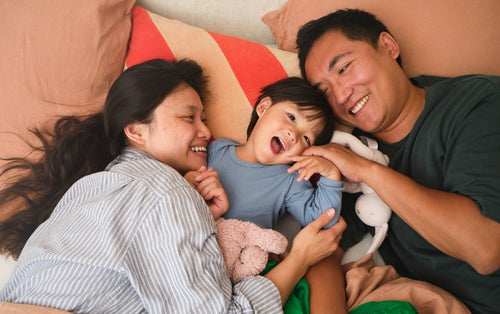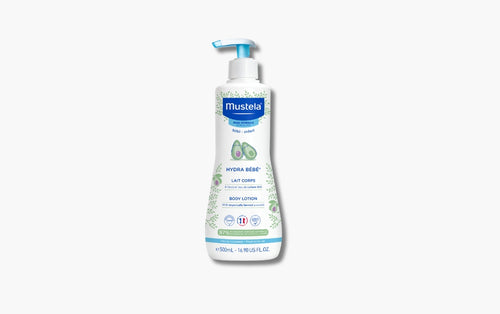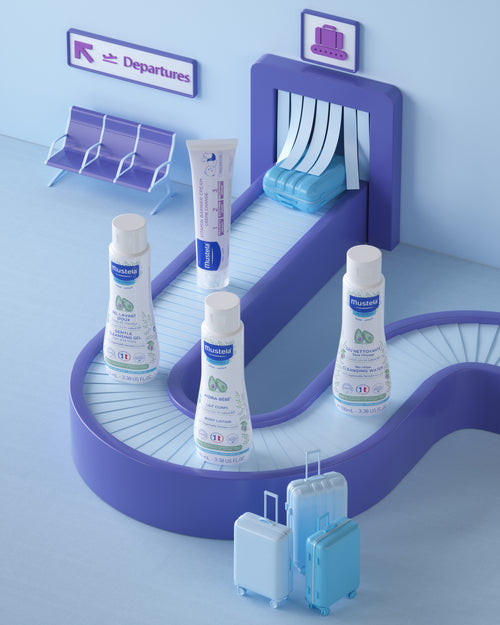Complete Guide to Baby Sun Protection in Australia
Australia's intense UV radiation makes sun protection vital for babies and young children, whose delicate skin burns easily and accumulates damage over time. With two in three Australians developing skin cancer before age 70, establishing proper sun safety habits from birth becomes a parent's priority. Understanding when babies can safely enjoy outdoor activities, which protective clothing works best, and how to apply sunscreen correctly helps shield your little one from harmful rays. This comprehensive guide covers age-appropriate sun protection strategies, from newborn shade requirements to toddler-friendly sunscreen application techniques.
Why is sun safety important for kids?
Children face heightened vulnerability to UV damage because their skin contains less melanin and remains thinner than adult skin. Young skin burns faster and more severely, often within just 10-15 minutes of direct sun exposure during peak hours.
The first 18 years represent the most critical period for skin cancer development later in life. Research shows that experiencing five or more severe sunburns during childhood doubles melanoma risk in adulthood. Eye protection proves equally vital, as cumulative UV exposure significantly increases cataract risk.
Beyond immediate sunburn concerns, unprotected exposure during early years creates lasting cellular damage that accumulates silently. Children spend considerable time outdoors during school hours when UV levels peak between 9am and 4pm, making consistent protection habits essential for lifelong skin health.
At what age can babies be exposed to the sun?
Babies under 6 months old should remain completely out of direct sunlight whenever UV levels reach 3 or above. Their delicate skin lacks the melanin protection needed to withstand even brief sun exposure safely.
Australian health authorities recommend keeping infants under 12 months away from direct rays during peak UV periods. Between 6 and 12 months, babies can venture outdoors with comprehensive protection including shade, protective clothing, and minimal sunscreen on small exposed areas.
Once your little one reaches their first birthday, supervised sun exposure becomes more manageable. However, the golden rule remains: seek shade during peak hours from 10am to 3pm, especially during daylight saving time when UV intensity peaks later in the day.
At what age can children be exposed to the sun?
For your newborn, complete shade protection becomes non-negotiable during their first six months. Even on cloudy days, harmful UV rays penetrate through cloud cover and can damage their paper-thin skin within minutes.
The safest approach involves planning outdoor activities during early morning hours before 9am or late afternoon after 4pm when UV intensity drops significantly. During peak periods, position your pram under trees, verandas, or use portable shade structures that block rays from all angles.
Car journeys require extra vigilance since UVA rays pass through side windows. Consider window tinting or removable UV shields to protect your little one during travel. Remember that reflected light from concrete, sand, and water can reach babies even under umbrellas, making enclosed shade your most reliable protection method.
When can babies and infants wear sunscreen?
Pediatric guidelines recommend introducing sunscreen once your baby reaches 6 months of age. Before this milestone, their skin remains too sensitive and permeable, making physical barriers like clothing and shade the preferred protection methods.
Medical authorities including the FDA and Australian dermatologists agree that mineral-based sunscreens work best for this age group. These formulations containing zinc oxide create a protective barrier rather than absorbing into delicate skin tissue.
Even after reaching 6 months, sunscreen serves as your final layer of defense rather than primary protection. Apply generous amounts only to small exposed areas that clothing and hats cannot cover, such as hands and facial features. Always conduct a patch test 24 hours before full application to check for potential reactions.
Toddler sun protection milestones
- At 12-18 months, toddlers can begin wearing wide-brimmed hats consistently as part of their daily outdoor routine.
- By 18-24 months, children develop the motor skills to help apply sunscreen with supervision and guidance.
- Around 2 years old, toddlers can learn to seek shade independently when playing outdoors, like finding trees or covered areas.
- Between 2-3 years, children can wear sunglasses with 100% UV protection and keep them on for extended periods.
- At 3+ years, toddlers become capable of understanding basic sun safety rules and reminding family members about protection.
- Establishing consistent daily sunscreen application before childcare or outdoor activities becomes routine by age 2-3 years.
Essential sun protection clothing for babies
UV-protective fabrics and coverage
Tightly woven fabrics offer superior protection compared to loose weaves that allow UV rays to penetrate through gaps. Hold any garment up to bright light - if you can see through the material easily, harmful radiation will pass through just as readily onto your baby's delicate skin.
Dark colours like navy, red, or black absorb significantly more UV radiation than pale shades. A standard white cotton t-shirt provides only UPF 5 protection, blocking merely 20% of dangerous rays. Purpose-built UPF 50+ garments block 98% of both UVA and UVB radiation, delivering reliable all-day coverage.
Synthetic materials including polyester, nylon, and specially treated bamboo blends excel at UV blocking while remaining lightweight and breathable. Long sleeves extending to the wrists and full-length pants covering ankles provide maximum skin coverage. For water activities, rash guards and swim leggings maintain their protective properties even when wet, unlike regular clothing that loses effectiveness once soaked.
Choosing the right hat styles
Wide-brimmed designs deliver comprehensive coverage for your little one's face, ears, and back of the neck - areas frequently missed by other protection methods. Bucket-style options work brilliantly for active toddlers since the consistent brim width shields from every angle, while legionnaire caps with rear neck flaps excel during pram outings or carrier adventures.
Baseball caps offer limited protection, covering only the forehead and nose area. For optimal defense against Australia's harsh conditions, select hats featuring brims measuring at least 7-8 centimeters around the entire circumference. Adjustable chin straps with breakaway safety features keep headwear secure during windy beach days or playground exploration.
Consider your child's comfort preferences when selecting between soft, crushable materials versus structured brims that maintain their shape. Reversible styles provide versatility while ensuring your toddler stays engaged with their sun protection routine.
Sunglasses for infant protection
Infant eyes remain particularly vulnerable to UV damage since their natural lens filters provide minimal protection against harmful rays. 100% UVA and UVB blocking becomes non-negotiable when selecting eyewear for your little one.
Australian standards AS/NZS 1067:2016 ensure sunglasses meet rigorous safety requirements for children's use. Wrap-around styles with close-fitting frames shield the delicate eye area from multiple angles, preventing rays from entering around the edges.
Flexible, impact-resistant materials prove essential for active babies who frequently drop or chew their accessories. Many infant sunglasses feature soft elastic straps that keep eyewear securely positioned during movement and play.
Start introducing sunglasses as early as your baby will tolerate them, typically around 6-12 months. Consistent use helps establish healthy protection habits while safeguarding developing vision from long-term UV exposure that contributes to cataracts and other eye conditions later in life.
Sunscreen guide for babies and toddlers
Safe sunscreen for babies 6-12 months
Mineral-based formulas containing zinc oxide or titanium dioxide work best for babies in this age group, as these ingredients sit on the skin's surface without absorption. The Australasian College of Dermatologists specifically endorses this approach for delicate infant skin.
Choose products labeled specifically for babies and conduct a patch test on your little one's inner forearm 24-48 hours before first use. Apply SPF 50+ broad-spectrum protection to exposed areas like hands, face, and feet - but only after ensuring shade and protective clothing are already in place.
For babies between 6-12 months, sunscreen application should remain minimal and targeted. Focus on small areas that clothing and hats cannot cover, remembering that even brief exposure during peak UV hours can cause damage to their developing skin.
Application tips for squirmy toddlers
Transform sunscreen time into a game by letting your toddler help with the process. Hand them the tube to hold or allow them to squeeze small amounts onto their palm while you guide the spreading motion. This involvement reduces resistance and builds cooperation.
Distraction proves incredibly effective during application. Sing their favourite nursery rhyme or count body parts as you cover each area. The best way to ensure complete coverage involves working systematically from head to toe rather than random dabbing.
Consider using a makeup sponge or soft brush for face application, which many kids find less overwhelming than adult hands. Role model the behaviour by applying your own sunscreen first, showing them it's a normal part of getting ready to play outside.
Reapplication and water activities
Water environments demand more frequent sunscreen renewal than standard outdoor play. Swimming pools, beaches, and splash pads create unique challenges where even water-resistant formulas lose effectiveness after 40-80 minutes of exposure.
Toweling off after swimming removes protective layers, regardless of the product's water-resistance claims. Your child needs fresh application immediately upon exiting the water, before their skin has completely dried. This timing prevents gaps in coverage during those vulnerable moments when wet skin reflects additional UV rays.
Ocean waves and chlorinated pools both compromise sunscreen integrity differently. Salt water tends to wash away mineral formulas faster, while pool chemicals can break down certain active ingredients. Pack extra product for beach days and apply generously each time your toddler emerges from aquatic play, even during brief breaks between swimming sessions.
Creating shade and safe outdoor activities
Timing outdoor play in Australia
Smart scheduling transforms outdoor adventures into safer experiences for your little ones. The Bureau of Meteorology provides daily UV forecasts that help parents plan activities around peak radiation periods, typically occurring between 10am and 3pm across most Australian regions.
Download the free SunSmart app to access real-time UV readings and protection timeframes for your specific location. This tool becomes particularly valuable during seasonal transitions when UV patterns shift unexpectedly. Early morning sessions before 9am and late afternoon periods after 4pm offer the safest windows for extended outdoor play.
Consider that UV levels can vary significantly based on altitude, cloud cover, and geographical location. Even on overcast days, up to 80% of harmful rays penetrate cloud barriers, making timing decisions crucial regardless of temperature or weather appearance.
Portable shade solutions for families
Pop-up beach tents and lightweight umbrellas provide instant protection when permanent shade isn't available. These compact options pack easily into prams or beach bags, weighing just over a kilogram in most cases.
Beach shelters with UPF50+ ratings block harmful rays while allowing cooling breezes to flow through. Look for designs featuring sand pockets and sturdy pegs that won't collapse during windy conditions at the coast.
Car window shades offer another layer of protection during travel, blocking up to 90% of UV rays while maintaining driver visibility. Magnetic pram covers work brilliantly for walks, creating enclosed shade that moves with your baby while protecting from reflected light off concrete and water surfaces.
UV-safe activities for different ages
Babies under 12 months thrive with sensory exploration activities conducted entirely within shaded areas. Sand play becomes safe when positioned under permanent structures, allowing tactile development without direct exposure. Water play tables work perfectly beneath covered verandahs, providing cooling relief while maintaining complete protection.
Toddlers aged 1-3 years can enjoy nature scavenger hunts during early morning hours before UV levels intensify. These activities encourage movement and learning while respecting safer timeframes. Beach visits become manageable with proper timing, focusing on shell collecting and gentle wave interaction during those crucial low-UV windows.
Preschoolers benefit from structured outdoor games that incorporate regular shade breaks. Teachers and caregivers can rotate activities between covered and open areas, ensuring children experience varied play while minimizing cumulative exposure. Even at high altitudes where UV intensity increases, these age-appropriate strategies maintain safety without limiting developmental opportunities.
Treating and preventing infant sunburn
Recognising sunburn in babies
Redness appears within 4-6 hours after sun exposure, often intensifying during the first 12 hours as the burn develops. Your baby's skin may feel noticeably warm to the touch, even before visible signs emerge.
Watch for changes in your little one's behaviour alongside physical symptoms. Fussiness, increased crying, or reluctance to be touched can signal discomfort from sun damage before obvious skin changes occur. Babies may also seem more tired than usual as their bodies respond to the burn.
The affected areas typically feel tender and may appear slightly swollen. Unlike adults, babies cannot communicate their pain levels, making careful observation crucial for early detection. Even people with naturally darker skin tones can experience sunburn, though symptoms may be subtler and take longer to develop in these cases.
Gentle treatment with Mustela products
When a mild sunburn occurs despite your best prevention efforts, Mustela's Cicastela Recovery Cream provides immediate relief for your baby's skin. This gentle formula soothes irritation while supporting the natural healing process.
Start treatment with cool compresses using soft cloths before applying any topical products. Mustela Hydra Bebe Body Lotion instantly hydrates, soothes and refreshes the skin, creating a protective barrier that prevents further moisture loss. The lightweight texture absorbs quickly without causing additional discomfort during application.
Combine treatment with Mustela's Gentle Cleansin Gel during bath time to cleanse without stripping already compromised skin. Keep your little one comfortable by dressing them in loose, soft fabrics that won't irritate healing areas. Remember to maintain extra hydration through frequent feeding while avoiding any further sun exposure until recovery is complete.
Role modeling sun safety behaviors
Children learn primarily through observation, making your daily sun protection habits their most powerful teacher. When you consistently apply sunscreen before heading outdoors, wear long-sleeved shirts during peak hours, and seek shade during family activities, your little one absorbs these behaviors as normal routines.
Your actions speak louder than any verbal instruction. Demonstrating how you check UV levels before planning outdoor time shows children that sun safety requires thoughtful preparation. Even simple gestures like reaching for sunglasses or adjusting your hat create lasting impressions about protecting against the risk of sun damage.
Make protection visible and engaging by involving your child in your routine. Let them help you apply sunscreen to your arms while explaining why ultraviolet rays require this daily shield. This hands-on participation transforms safety measures from restrictions into exciting family rituals that children eagerly embrace.

